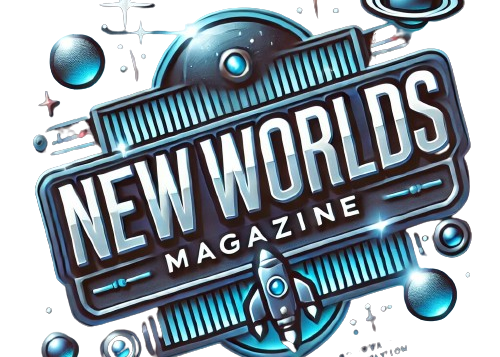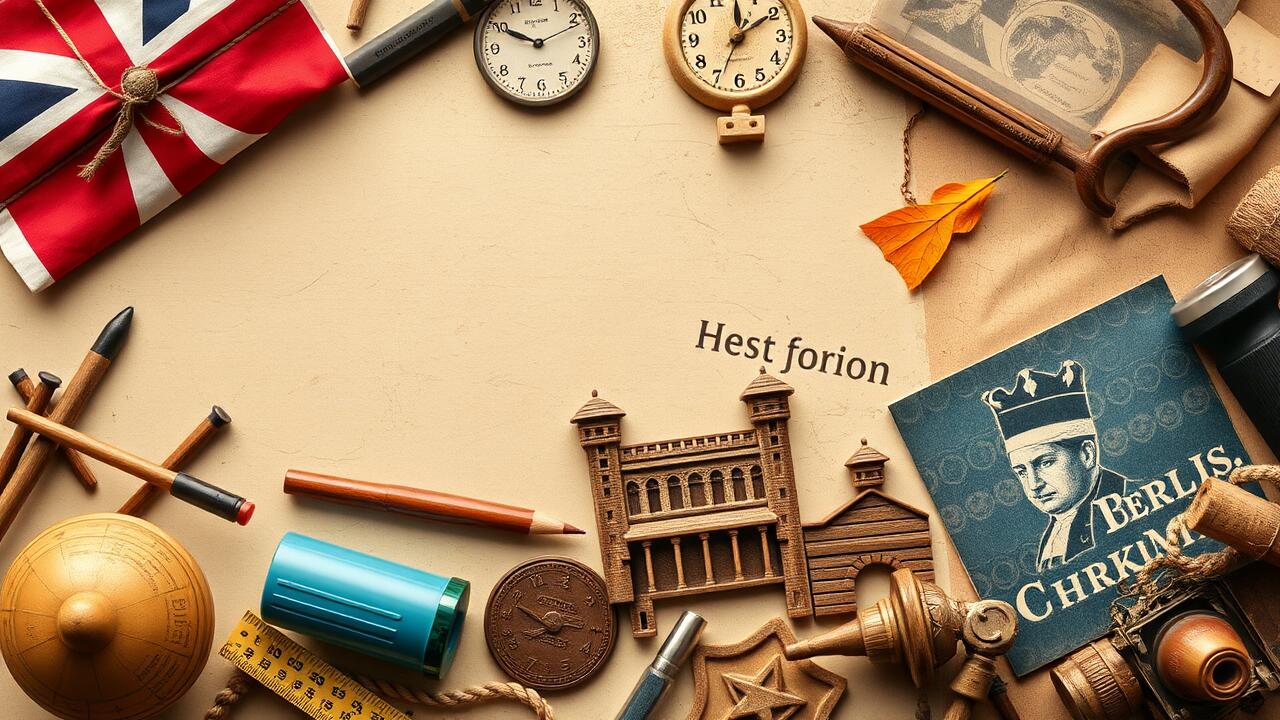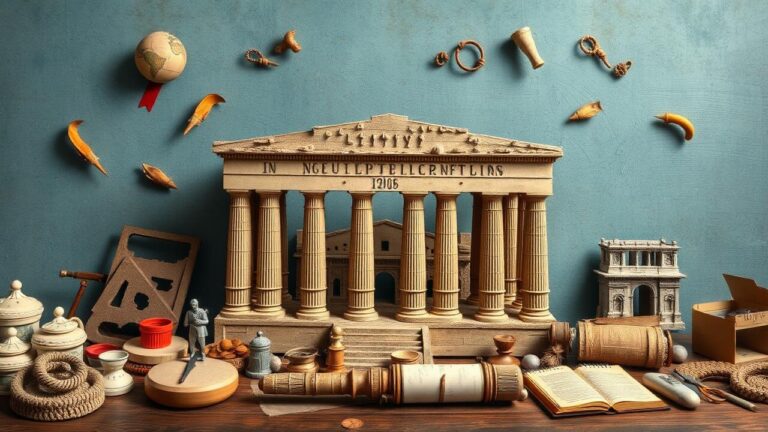The Impact of Climate Change on Archaeological Sites
Recent investigations reveal a troubling reality: escalating temperatures and ferocious weather phenomena are wreaking havoc on archaeological sites across the globe. These tumultuous shifts usher in heightened erosion, catastrophic flooding, and material degradation—forces potent enough to obliterate centuries of history, casting shadows over ongoing research endeavors. Artifacts and structures that have bravely endured the ravages of time now find themselves perilously exposed to conditions that threaten their very survival. This dilemma presents an intricate puzzle for conservationists; it often demands swift action and resources that may be frustratingly out of reach.
But wait—there’s more than mere physical destruction at play! Climate change also sends ripples through local ecosystems, many of which harbor historical significance. Transformed landscapes can shroud archaeological layers or alter how artifacts are preserved right where they lie. Grasping the long-term consequences of these climate-induced transformations is crucial—not just for safeguarding our cultural heritage but also for shaping public policy aimed at protecting these irreplaceable sites for generations yet to come. By weaving together archaeological methods with strategies for mitigating climate change, we can cultivate sustainable practices that honor both heritage conservation and environmental stewardship in this challenging new era.
Challenges Facing Global Heritage
The preservation of global heritage stands at a crossroads, beset by an array of daunting challenges that spring from the frenetic pace of urbanization, unchecked industrial expansion, and the ominous shadow of climate change. A plethora of archaeological sites find themselves in peril as construction endeavors prioritize sleek modernity over the whispers of history embedded within ancient stones. The tapestry is further frayed by increasingly violent weather phenomena—an unsettling consequence of climate change—that gnaw away at these venerable landmarks, threatening to erase irreplaceable cultural treasures forever.
Public awareness and appreciation for cultural heritage oscillate dramatically across different regions; it’s a patchwork quilt woven with threads both vibrant and tattered. In some locales, the rich tapestry that these archaeological sites represent is often overshadowed by immediate economic incentives driving local populations toward development—a compelling yet shortsighted allure. Meanwhile, other sites fall prey to illicit excavations and rampant looting, rendering conservation efforts even more Herculean than they already are.
Navigating this labyrinthine landscape necessitates collaborative strategies that intertwine local communities’ voices with government initiatives and international support systems. Only through such partnerships can we hope to tackle these multifaceted challenges head-on and safeguard the legacy of our shared global heritage for generations yet unborn.
| Challenge | Description | Potential Solutions |
|---|---|---|
| Urbanization | Rapid development often prioritizes modern infrastructure over historical sites. | Implement strict zoning laws and raise public awareness of heritage value. |
| Climate Change | Extreme weather events are deteriorating archaeological sites. | Invest in sustainable preservation methods and climate resilience strategies. |
| Looting | Illicit excavations are stripping sites of their cultural treasures. | Strengthen law enforcement and incentivize local communities to protect their heritage. |
| Economic Pressure | Local populations often favor immediate economic gains through development. | Promote heritage tourism to demonstrate the economic benefits of conservation. |
| Public Awareness | Varying levels of appreciation for heritage across regions lead to neglect. | Launch educational campaigns and community engagement initiatives to raise awareness. |
Archaeological Discoveries in Urban Areas
Beneath the vibrant chaos of urban life, where skyscrapers pierce the sky and traffic hums a relentless tune, lies a hidden tapestry—a mosaic of history woven into the very fabric of our cities. As these metropolises stretch their limbs and reshape their identities, they often stumble upon remnants of bygone eras—archaeological treasures that whisper tales from civilizations long past. In places like London, New York, and Rome—cities steeped in rich narratives—excavations unveil artifacts that illuminate the rhythms of everyday existence: commerce bustling with energy, cultural exchanges sparking creativity.
Yet this dance between discovery and destruction is fraught with tension. When construction projects break ground amidst these ancient echoes, excitement crackles in the air; urgency surges as archaeologists scramble to unearth relics before they vanish beneath concrete jungles. The interplay between urban planning and historical preservation becomes paramount—a balancing act on a tightrope stretched taut over time itself. Each dig site transforms into a race against modernity’s relentless march; every artifact recovered is not just an object but a fragment of collective memory that demands both reverence and recognition in our ever-evolving story.
Unearthing History Beneath Modern Cities
Urban landscapes often shroud a tapestry of history, just waiting to be unearthed. When archaeologists dig into these bustling realms, they stumble upon artifacts, structures, and features that whisper stories from forgotten cultures. Yet, the very streets and buildings that seem to obstruct their quest also serve as guardians against total annihilation of these historical treasures. Enter innovative technologies—ground-penetrating radar and drones—that have revolutionized exploration beneath the surface without disturbing the ground too much. This leap forward allows for smarter choices regarding preservation versus development.
Amidst the chaos of city life, excavations can unveil astonishing tales woven into our shared human saga. Often uncovered are fragments of everyday existence: shards of pottery, ancient tools, heaps of refuse—all echoing the socio-economic realities faced by those who walked these streets long before us. By scrutinizing such remnants, archaeologists stitch together an intricate narrative showing how urban environments morph over centuries. Integrating archaeological discoveries into modern urban planning not only enlightens today’s citizens about their rich heritage but also cultivates a profound appreciation for the intricate layers of historical narratives embedded in their own backyards.
The Intersection of Archaeology and Anthropology
Archaeology and anthropology—oh, what a fascinating duo they make! They intertwine in ways that deepen our grasp of human societies and the tapestry of their evolution through time. Picture archaeology as the detective, unearthing tangible remnants of bygone cultures: artifacts strewn across ancient grounds, crumbling structures whispering tales from ages past, and environmental clues lingering in the soil. In contrast, anthropology steps into the spotlight to decode the intricate dance of human behavior—the social fabrics that bind us together and the rich cultural practices that define us.
This dynamic interplay between disciplines isn’t just academic; it’s like a vibrant conversation across centuries! Anthropological theories breathe life into archaeological finds, allowing researchers to peel back layers of meaning about how ancient peoples navigated their worlds—how they adapted, exchanged ideas, influenced one another. It’s this collaborative spirit that fosters a holistic lens through which we can view historical narratives; it compels us to consider not only what societies crafted but also why those creations matter in the grand scheme.
Delving into this intersection is paramount for anyone seeking a well-rounded picture of humanity’s saga—a journey laden with complexities and textures as varied as life itself. The connection between these fields reveals an ever-evolving story where culture ebbs and flows like tides against rocky shores—a narrative waiting to be explored.
How Cultures Shape and Are Shaped by Artifacts
Artifacts stand as crucial bridges spanning the chasm between bygone eras and contemporary life, encapsulating the beliefs, customs, and innovations of those who crafted them. Each relic unearthed from an archaeological dig whispers secrets about social hierarchies, economic endeavors, and cultural narratives. By delving into these objects’ stories—pottery styles that tell tales of function or beauty, crafting methods steeped in tradition—the tapestry of daily existence unfolds: rituals come alive; interactions among diverse communities become tangible.
Yet there’s a flip side to this coin—cultures are not merely passive recipients but dynamic architects shaped by the very artifacts they create and wield. As societies morph over time, their creations mirror changes in power structures, trade routes woven across lands far and wide, technological revolutions that redefine everyday life. The leap from hand-forged to mass-produced items is more than just evolution; it’s a testament to resilience—a narrative of adaptation forged under external pressures and inventive sparks alike. Grasping these intricate relationships carves out profound understandings of humanity’s adaptive spirit—how we sculpt our surroundings while simultaneously being sculpted by them.
Notable Archaeologists and Their Contributions
Throughout the annals of history, a multitude of archaeologists have etched their marks on the canvas of human civilization, reshaping our comprehension in remarkable ways. Take Howard Carter, for instance—his monumental discovery in 1922 of King Tutankhamun’s tomb flung wide open a portal into the enigmatic world of ancient Egyptian life and customs. With an eye for detail that bordered on obsession, his meticulous documentation transformed mere artifacts into vibrant narratives that spilled secrets about cultural practices from ages long past.
Then there’s Kathleen Kenyon, whose groundbreaking work at Jericho wasn’t just archaeology; it was an intricate dance with stratigraphy that peeled back layers like pages in a forgotten book. Her techniques allowed scholars to tease out settlement patterns and habitation histories with astonishing precision—each layer telling tales that interwove lives across time.
And let’s not forget other luminaries who have played instrumental roles in disentangling the tangled webs of bygone societies! James Mellaart’s excavations at Çatalhöyük illuminated early agriculture and communal living in ways previously unimagined, stretching the boundaries of understanding surrounding Neolithic cultures to new horizons. In more contemporary times, Zahi Hawass has emerged as a beacon for both preservation efforts and public engagement within archaeology—a reminder that scholarly pursuits can spark widespread appreciation for cultural heritage around the globe. Their collective endeavors don’t merely elevate academic discourse; they cultivate a deeper reverence for our shared past among peoples everywhere—an enduring legacy that resonates through time!
Pioneers Who Changed Our Understanding of History
Throughout the tapestry of history, a myriad of archaeologists has dramatically reshaped our grasp of ancient civilizations—each one a luminary in their own right. Take Howard Carter, for instance; his discovery of Tutankhamun’s tomb thrust an astonishing array of artifacts into the spotlight, unveiling not just treasures but profound insights into the intricate rituals surrounding Egyptian burials. Then there’s Kathleen Kenyon—a trailblazer whose excavations at Jericho upended age-old assumptions about urban evolution, crafting entirely new timelines that illuminated the dawn of agricultural societies and communal life.
And let us not forget Sir Leonard Woolley! His digs at Ur unearthed priceless relics that painted vivid portraits of Sumerian culture—revealing urban centers steeped in sophistication and societal complexity previously unimaginable. These vanguards didn’t merely refine archaeological techniques; they redefined historical narratives themselves, igniting a deeper sense of appreciation for humanity’s collective journey through time. Their legacies endure, sparking inspiration in today’s—and tomorrow’s—archaeologists across the globe like a beacon guiding explorers through uncharted waters.
Future Directions in Archaeological Research
Emerging technologies are on the brink of revolutionizing archaeological research in ways previously unimaginable. Picture this: tools like LiDAR and ground-penetrating radar swoop in, unveiling ancient structures lurking beneath our feet without so much as a scrape of soil. These high-tech marvels empower researchers to swiftly and meticulously map expansive terrains, bringing to light intricate patterns of human activity that had long been shrouded in mystery. This seismic shift in methodology is not just about gadgets; it’s sparking an exhilarating fusion of disciplines—where data science waltzes with traditional fieldwork, creating a rich tapestry of inquiry.
But wait! There’s more than just tech wizardry at play here. A burgeoning focus on community engagement and ethical practices is reshaping how archaeology unfolds. Communities are stepping into the spotlight, recognized for their vital role in both excavation efforts and pivotal decision-making processes. This collaborative dance not only safeguards cultural heritage but also cultivates a profound sense of ownership and reverence for historical narratives that resonate deeply within these communities. Thus, as we gaze into the future of archaeological exploration, it’s clear: inclusive strategies will take center stage—honoring the voices intertwined with the artifacts and sites we seek to understand better.
Emerging Trends and Areas of Focus
Innovative technologies are increasingly revolutionizing the landscape of archaeological research, weaving a tapestry of precision into excavations and analyses that was once thought unattainable. Picture this: remote sensing and ground-penetrating radar acting as modern-day diviners, guiding researchers to locate and evaluate sites without so much as a shovel breaking the surface. These cutting-edge advancements empower archaeologists to gather data with remarkable efficiency, uncovering hidden structures and features that traditional methods might easily overlook—like whispers of the past waiting to be heard.
But wait, there’s more! Enter digital documentation techniques like captivating 3D modeling—these tools don’t just document; they preserve and share findings in ways that engage an ever-widening audience while enriching education around archaeological practices. It’s as if archaeology has stepped into a new realm where storytelling meets technology.
Now let’s talk about synergy—the delightful fusion of interdisciplinary approaches within this field is gaining serious traction. When archaeologists team up with anthropologists, environmental scientists, and other specialists, it sparks a richer understanding of our collective past. This melting pot of expertise unveils nuanced interpretations of artifacts and human behavior alike, shedding light on how cultures deftly adapt amidst shifting environments and influences over time.
As we forge ahead into uncharted territories with emerging methodologies such as bioarchaeology and geoarchaeology at our disposal, we find ourselves standing on the brink of expanding inquiry—each new discovery paving pathways for deeper insights into the labyrinthine storylines woven throughout human history.
- The integration of artificial intelligence to analyze excavation data more efficiently.
- Increasing use of virtual reality (VR) to simulate archaeological sites for educational purposes.
- Enhanced collaboration across global archaeological projects leveraging cloud-based tools and platforms.
- The role of public archaeology and community involvement in modern excavations.
- Emphasis on ethical practices and the importance of cultural heritage preservation.
- Application of isotopic analysis for understanding ancient diets and migration patterns.
- Growing focus on sustainability in archaeological practices to minimize environmental impact.
Conclusion
The relentless exploration of archaeological sites unravels the intricate tapestry of our shared human saga, exposing strata upon strata of history that deepen our grasp of ancient civilizations. As scholars diligently excavate artifacts from the earth’s embrace, they unveil vital insights that shape not only academic discourse but also heighten public reverence for our cultural heritage.
However, this dynamic field grapples with formidable challenges—climate change’s creeping menace and the encroaching tide of urban development threaten to obliterate these delicate remnants. To counter this onslaught, a nimble adaptation is essential; we must protect these fragile vestiges while enlightening communities about their profound historical relevance. The synergy between diverse disciplines, coupled with inventive excavation techniques and analytical approaches, will be pivotal in weaving together a more nuanced narrative of humanity’s ever-unfolding story.
FAQS
What is the impact of climate change on archaeological sites?
Ah, climate change—an insidious force! It wreaks havoc upon archaeological treasures, with rising sea levels lapping hungrily at coastlines, relentless erosion gnawing away at earth’s layers, and extreme weather events unleashing chaos. This perfect storm poses a daunting challenge to those striving to safeguard these invaluable cultural legacies.
What challenges do global heritage sites face today?
The plight of global heritage sites is multifaceted and dire! They grapple with the relentless march of urban development that encroaches upon their sanctity, rampant looting stripping them bare, the ominous shadows cast by climate change looming ever larger, and a persistent shortage of funding for preservation efforts. All these threats conspire to undermine their very essence and survival!
How do urban areas affect archaeological discoveries?
Urban landscapes often serve as deceptive blankets—hiding beneath their bustling façades significant remnants of our past! Yet amidst this concrete jungle lie tantalizing prospects; construction projects may unearth astonishing finds that illuminate forgotten histories during the frenetic pace of city expansion.
What is the relationship between archaeology and anthropology?
An intricate dance unfolds between archaeology and anthropology as they converge in an exploration into human existence—a dialogue concerning how cultures craft artifacts that shape identities while simultaneously being shaped by them. Together they unravel insights into behavior patterns and societal evolution across epochs.
Who are some notable archaeologists and what have they contributed?
Among the pantheon of distinguished archaeologists stand titans like Howard Carter—whose excavation unveiled Tutankhamun’s opulent tomb—and Mary Leakey—the pioneer who unearthed vital early hominid fossils. Their groundbreaking contributions have profoundly reshaped our narrative about humanity’s journey through time!
What are the emerging trends in archaeological research?
A veritable renaissance blooms within archaeological research! We witness burgeoning trends propelled by cutting-edge technologies—think remote sensing mingling with GIS—interdisciplinary partnerships sprouting up like wildflowers, alongside a refreshing focus on public archaeology aimed at weaving communities into the rich tapestry of heritage preservation efforts.







